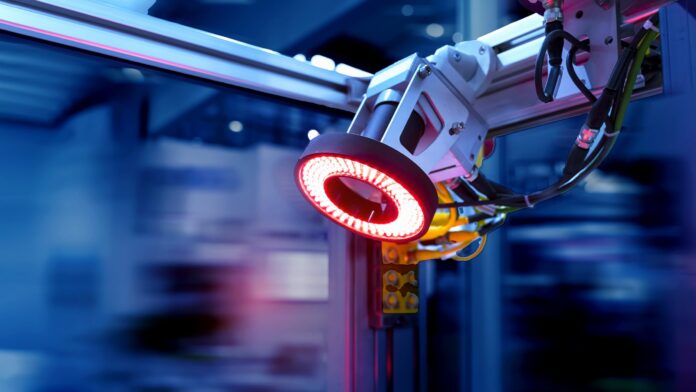Japanese industrial conglomerate Hitachi has hooked up a private cellular network from Ericsson and an on-site edge engine from Amazon Web Services (AWS) to run computer vision checks on a production line at its electric motor vehicle manufacturing plant in Berea, Kentucky, in the US. The demonstration project, managed by Hitachi America R&D, was geared to show how critical 5G edge workloads can drive Industry 4.0 applications already.
The trio said the trial setup – which used Ericsson’s “dual-core” private cellular box solution and AWS’s site-edge Snow family, and was constructed in three days – showed that an edge-5G computer-vision application (from Hitachi itself) could simultaneously inspect 24 assembly-line components simultaneously (“compared with one-by-one inspection” using manual checks by humans) to observe defects down to sub-millimeter level.
Cameras were set up on a live production line producing motor components for electric vehicles. Real-time video of their assembly was fed across the 5G network to an AWS Snowball Edge device running Hitachi’s video analytics, a statement explained. “The high throughput and low latency of 5G was key to uploading huge volumes of video data from the cameras to AWS Snow Family device for analysis, which helped streamline decision-making,” it said.
The machine vision application would drive defect detection, waste reduction, and lost production, they said. The setup could also be aped for defect and quality inspections, robotics automation, real-time machine control, augmented reality, and other Industry 4.0 applications, they suggested. They listed operational efficiency, product quality, supply chain optimization, and environmental impact as benefits.
The statement said: “The goal was to build, train and apply these models to enhance product quality on the manufacturing floor, marking a significant step in the application of multiple technology components in industry.”
Sudhanshu Gaur, vice president for R&D at Hitachi America and chief architect at Hitachi Astemo Americas, said: “We explored and validated new use cases enabled by private 5G to show how smart factories can already function. The combination of private 5G, cloud, and artificial intelligence/machine learning automated technologies has the potential to revolutionize the way we manufacture products. We are excited to be at the forefront of this innovation.”
Thomas Noren, head of PCN commercial and operations at Ericsson, said: “The best news about this collaboration is that it is not about capabilities that will be available at some distant point in the future. These solutions can be deployed today in manufacturing and enterprise environments to deliver a range of early adopter competitive advantages”
Chris McKenna, global lead for private wireless at AWS, said: “While it’s long been anticipated that technologies such as 5G and video analytics could drive innovation in manufacturing, one of the challenges has been how to securely and reliably process that data to drive outcomes. By using Ericsson’s [private 5G], and running artificial intelligence and machine learning models on an AWS Snow Family device, we were able to demonstrate a reliable and secure connection to run machine vision inferences at the site to help detect defects earlier.”

